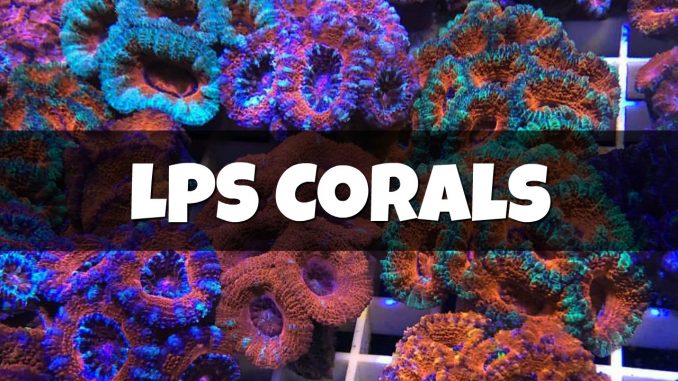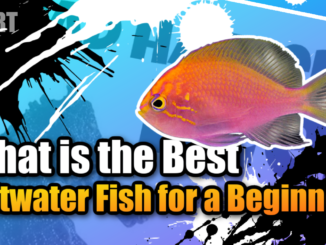
Hey Salt nation, Jeff Hesketh here and today we are jumping into an article on LPS Corals. As my taste in corals has changed over the years, I have found myself falling in love with LPS coral (Large Polyp Stony Corals).
They are by far my favorite coral and most often the more forgiving of the two types of stony corals. With Today’s article, we are going to be taking a look at the difference is between SPS and LPS coral, Their requirements and how to be successful with keeping LPS Coral.
Top 10 LPS Corals
In the saltwater aquarium hobby you often hear the terms soft corals, LPS and SPS used to identify different groups of corals. Grouping corals is very useful because it helps describes the coral and also helps hobbyists understand what the particular coral will need in order to survive.
The Difference Between SPS and LPS Coral
Simply put, the difference between an LPS coral and an SPS coral is the size of their polyps, outside of their lighting and food requirements. The larger the polyps on the coral, the easier it is for the coral to feed. I enjoy feeding my LPS corals because it is so interactive and I love to watch them feed.
All coral’s polyps on the coral contains a tiny organism known as zooxanthellae, within their tissue. Zooxanthellae provided corals with food; but only if there is enough light absorbed through the polyps.
What is LPS Coral?
Large Polyp Stony Corals consist of a rigid skeleton with large fleshy polyps. LPS usually require moderate to high light levels and moderate flow rates. They are a bit more forgiving with water quality compared to SPS corals.

Growth rates and patterns vary dramatically from one species to another. Common LPS corals in the aquarium trade include Acanthastrea, Euphyllia, Favia, Fungia, Blastomussa, Dendrophyllia, and Tubastrea. Shopping for corals becomes easier when you know the coral’s care requirements.
Based
Selecting New LPS Coral for your Aquarium
Look for corals with healthy polyps that are extended and fleshy. Avoid LPS specimens with dying or retracted polyps/heads because the affliction may quickly spread.
Usually, if the dying heads are removed from the colony the coral will have a much better chance of survival. Avoid any corals with brown jelly or black tissue.
That is a red flag and something that may spread if introduced into your aquarium. Tears or cuts in a coral’s flash can be detrimental. Be extra careful when handling or transporting corals because the fleshy polyps are easily damaged, especially when fully extended.
Once you’ve brought the coral home safely, be sure to give it plenty of time to acclimate to your aquarium’s water temperature and chemistry.
You may also want to dip the coral as a preventative measure to avoid introducing unwanted hitchhikers into your aquarium system.
LPS Coral Tank Placement
Find a spot in your tank that will give the coral plenty of room to grow and thrive in its new home. Pay careful attention to the coral’s light and water flow requirements. Too much flow can cause tissue damage; not enough may make it difficult for the coral to feed. The best tank placement for LPS would be mid tank or on the bottom based on lighting needs.
Caution: LPS corals often have long sweeper tentacles that can kill just about anything they touch. These sweeper tentacles may extend pretty far depending on the size and species and can harm neighboring corals. Be sure to give your new LPS coral plenty of room and keep it away from other corals of any kind.
How to Feed LPS Coral
Like I mentioned earlier in the article feeding LPS corals is probably my favorite part of keeping them. Some LPS coral can accept larger particles of food. They do best with spot feeding with miss shrimp, brine shrimp or you can make your own coral food mixing them together.
Most corals naturally feed at night so this would be the best time. You can stimulate a feeding response during the day by adding phytoplankton or zooplankton to the aquarium prior to spot feeding.
Generally speaking, LPS corals are pretty easy to grow in a saltwater aquarium as long as they are properly cared for and you have good aquarium husbandry. They are some of the most beautiful species of coral available to aquarium hobbyist in today’s market.
My Newsletter.
I would like to invite you to subscribe to my newsletter, it’s a great way to stay up to date on newly added content to Mad Hatter’s Reef Tank as well as exclusive content that you can not find here on the blog.
I Appreciate You!
I just wanted to wrap things up by saying that I’m here for you. I want you to succeed as you begin with your saltwater aquarium efforts. Feel free to contact me. I will do my best to respond to your emails and answer any questions you m
Thank you so much for your support and I would love for you to drop me a line on my Facebook Page. I look forward to meeting you.
P.S. If you found this page helpful, please hit the like button below.




